If you are reading this review, that probably means you have more than one remote that you use to control your home entertainment equipment. I have four physical remotes that I use when I want to watch shows on my TV. There’s the DirecTV remote, my Onkyo AV receiver remote, the Roku remote and a remote for my Samsung TV that I sometimes need to use if the source input gets screwed up for some reason. When I’m just watching shows on the DirecTV, I only need the DirecTV remote because it can turn on the TV and control the satellite set-top box. But when I want to watch shows on the Roku, I have to use the Onkyo remote to change HDMI inputs and adjust volume, and the Roku remote to control the Roku. Juggling remotes is a skill that I’ve perfected over the years, but I’m always looking for ways to minimize and optimize. That’s why the AnyMote Home remote looked interesting to me. They offered to send me one to review and I agreed. Let’s see how well it worked.
What’s in the box?
AnyMote Home remote
User manual
What is it?
AnyMote is a universal Smart Remote Control hardware and software solution that allows you to control all of your home’s infrared and WiFi controllable devices like TVs, set-top boxes, media players, Bluetooth speakers, lights, cameras, and more.
If you have an Android device that has a built-in IR transmitter like the LG G5, the LG V10 and others, you can just download the free AnyMote app and use it. But most phones don’t have IR transmitter, also called an IR blaster, so the AnyMote device is also needed.
The AnyMote IR blaster is a black plastic device that you position near your entertainment devices so that it will have line of sight to beam the IR commands.
AnyMote runs on 2 AA batteries for up to 12 months. Note that the batteries are not included in the package.
Setup
Setup is easy. Just install the batteries, install the app on your Android or iOS device and follow the prompts to pair with the remote and setup devices.
The app includes a large database of manufacturers and products that can be controlled. I setup remotes for my Onkyo AV receiver, Samsung TV, DirecTV and a Roku.
Each remote includes touch buttons that should match up with the buttons on the physical remote but that can require that you know the exact model # for your device. Depending on the device, the on-screen remote for each device can include multiple pages of scrolling buttons. Having to scroll and swipe through screens to find a specific button can be a pain in the rear. Even more annoying is that sometimes when you’re scrolling through lists of items to turn on / off, tapping on the item that you want to toggle will cause the list to jump back up to the top and will then require that you scroll back down to try again.
Putting AnyMote to work
Line of sight is not required between your phone and the AnyMote, however it is required between the AnyMote and the device(s) that you are trying to control. I placed the AnyMote within 10 feet of my equipment, put away my physical remotes and tried to use AnyMote to control my AV equipment. I became frustrated almost immediately because it’s more trouble to turn on my phone, find the AnyMote app, bring up the programmed remote that I need to use and then press the on-screen button for the desired function. The whole process can take 4-5 times longer than just picking up a physical remote and pressing a button. The process becomes even more cumbersome if you have to scroll through more than one page to find the button that you need.
Pressing buttons and having the command actually work was hit and miss. Sometimes it worked, most of the time it did not. I didn’t want to give up too soon, so I kept at it and unfortunately I disliked using AnyMore more and more as time went along.
I was excited to try the Amazon Echo integration because then I could just speak my commands instead of navigating around screens of buttons. That had to be so much easier and faster right? Ummmm, no.
Using AnyMote with my Amazon Echo Dot required that I add the AnyMote skill to the Echo Dot which was easy. Then I paired the Echo to the AnyMote from within the AnyMote app. This step took a few tries and some waiting for the app to do its thing. It kept giving me a spinning graphic on the screen like it was working at something.
Once it was setup, you’re supposed to be able to say “Alexa tell AnyMote to Mute my TV, Alexa tell AnyMote to volume up 5 times my TV, etc. where the command (bolded) is the name of a button and the device (also bolded) is the name of the created remote. Using Alexa to control my devices was even more frustrating than using the remotes that I had created. I think I was able to change the volume level a couple of times, but mostly Alexa would just complain that she couldn’t find the remote that I had specified. Argh…
The AnyMote app has a LOT of features like macros, gestures and the ability to create your own custom remote layouts. With macros, you can string together a bunch of commands from your configured remotes. I created a few of macros to try and didn’t have much luck getting any of them to work. Setting up the timing between each command was a challenge. There’s also a gestures feature that will let you use taps and swipes on a blank screen that are tied to buttons on your reviews. This actually worked pretty well. Custom remote layouts will let you create a remote that has all the most used buttons from multiple remotes. This will save you time switching between all the remotes that you’ve created.
There’s also a gestures feature that will let you use taps and swipes on a blank screen that are tied to buttons on your reviews. This actually worked pretty well. Custom remote layouts will let you create a remote that has all the most used buttons from multiple remotes. This will save you time switching between all the remotes that you’ve created.
Custom remote layouts will let you create a remote that has all the most used buttons from multiple remotes. This will save you time switching between all the remotes that you’ve created, but it takes time to configure everything.
Final thoughts
I had hopes for AnyMote, but in the end, this hardware and software solution feels like it’s not quite ready for prime time. I found the remote to be noticeably slow issuing commands and more often than not, the commands did not control my devices. When it’s all said and done, I think it’s infinitely easier to just use my physical remotes. I know where the buttons are and don’t have to scroll through screens to find the command I need. Although I’m not finished looking for a good way to combine all my remote controls into one device, I know that a touch screen universal remote is probably not what I would enjoy using. I like remotes with physical buttons that always work and require little if any thought to use them.
Source: The sample for this review was provided by AnyMote. Please visit their site for more info and Amazon to order.
INIU Mini Portable Charger, Small 45W PD Power Bank, 10000mAh USB C in&Out Fast Charging Pocket Size Battery Pack, Travel Essentials Powerbank for iPhone 17 16 15 14 Pro Air, Xiaomi, Samsung S24 etc
32% OffINIU Portable Charger, Smallest 22.5W 10000mAh Power Bank, USB C in/Output Fast Charging 3-Output Mini Battery Pack Charger with Phone Holder for iPhone 17 16 15 14 Air Samsung S23 Google iPad Tablet
15% OffProduct Information
| Price: | $89.00 |
| Manufacturer: | AnyMote |
| Retailer: | Amazon |
| Pros: |
|
| Cons: |
|

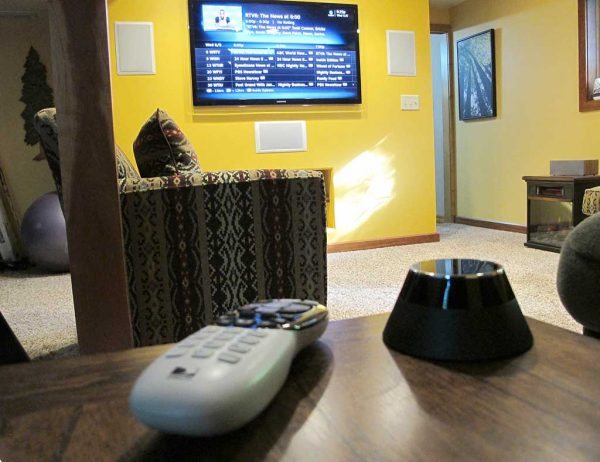
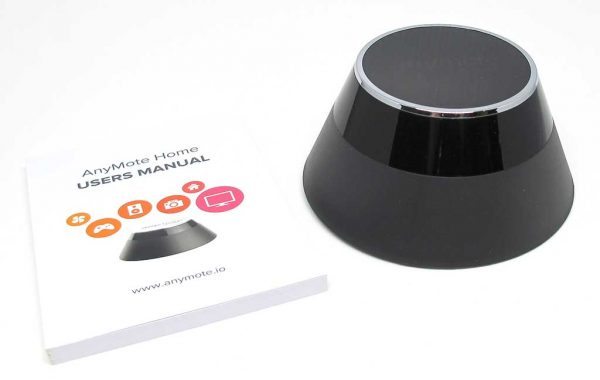

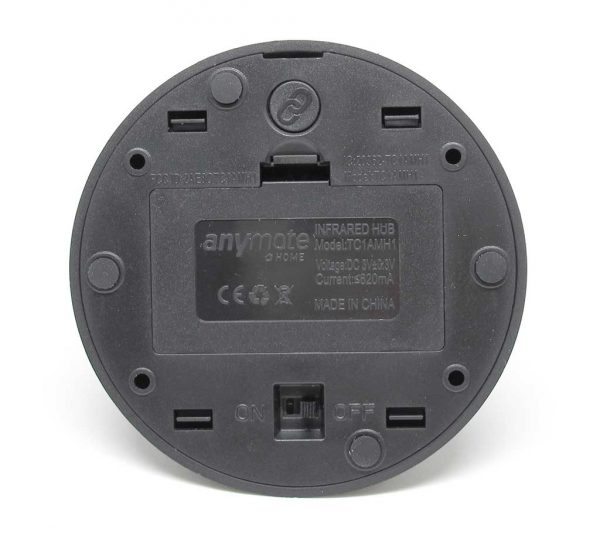
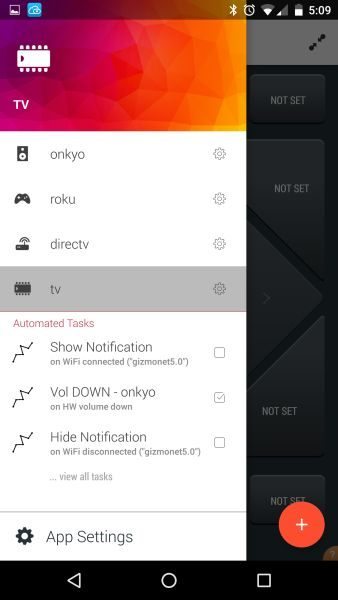
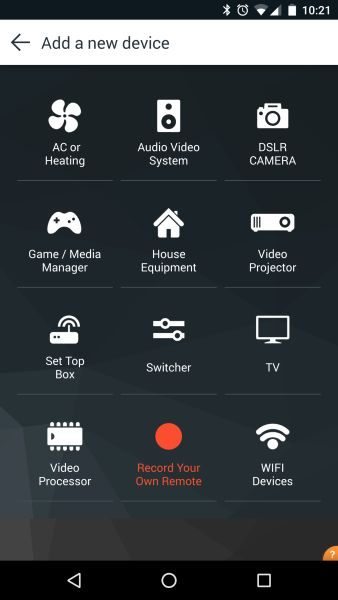
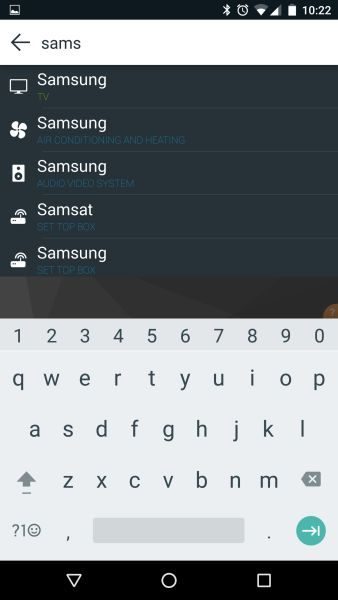
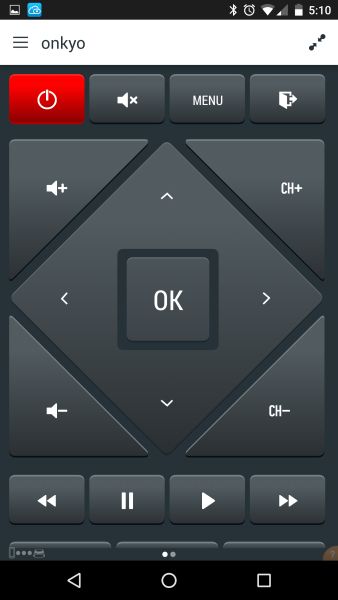
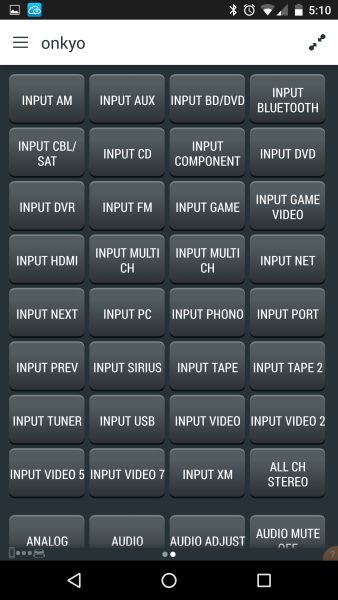
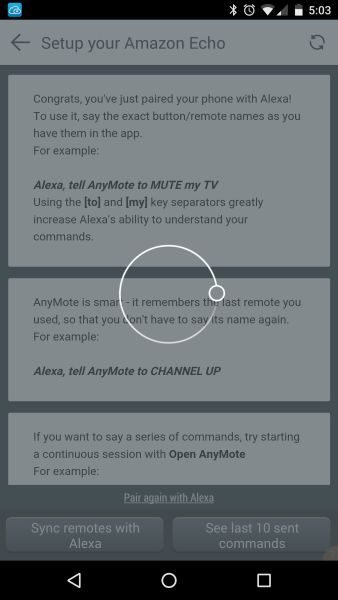
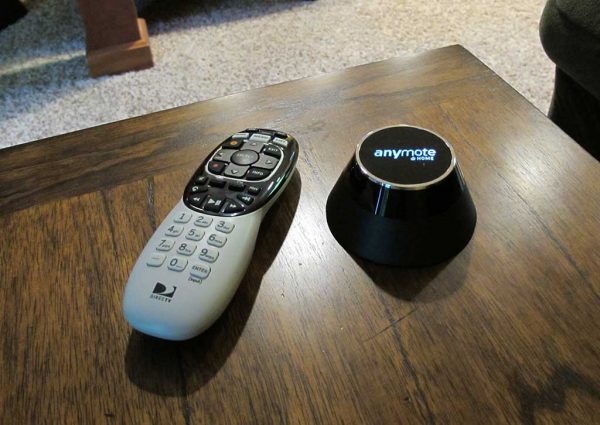


Gadgeteer Comment Policy - Please read before commenting
Hi, Julie,
I am using the Anymote Smart Remote app, and I find it depends on use case. In my instance, I am trying to replace my venerable Pronto remote. I have a 7.5″ tablet that I use primarily as a remote. It’s a little bit of a pain to have to press a button to turn it on, but I was able to build a remote that had most of my commonly used commands on one page, so no flipping back and forth to different remotes, which is nice. You can also stack commands as a macro under one button, which is handy. I use it to control my TV, receiver, HTPC, and lighting all from one page.
In theory it sounds great. But it was just too frustrating to use – for me. The AnyMote folks have asked me to try moving the AnyMote device closer to my equipment to see if that improves things. I will try that tonight, but as it is, the AnyMote is less than 10 feet from everything and in a direct line of sight.
“In Theory..”
NO…in FACT. I suggest you look at the Anymote app after each of your “failures” using it via Alexa, ckick on SETTINGS > Amazon Echo
There you can see what you “said” and what Alexa actually “HEARD”.
My Galaxy Note 4, which has KNOWN problems working with Anymote performs flawlessly in Direct mode (using internal IR Blaster), INDIRECT mode using Anymote HUB, and via Alexa/Dot using voice.
For the 4.2 billion people on the planet that watch TV, I do not believe ‘flat screens’ or ‘voice’ is a decent solution to the complicated and complex TV remotes available today. Flat screens do not have the Haptic response or feel that is necessary for human beings to validate their activities. Voice activation will never be able to perfect the variations in accents, cadence, clarity, and speech velocity challenges to become the true solution to complicated over-buttoned remotes available. The first objective must be just simplifying the User Interface for the large majority of users, including the disabled by enforcing Inclusive Design to make the millions of URCs sold today Universal in their application to everyone
as well as devices.
I completely agree with your comments.
I agree with all of your points about using your phone or tablet as a remote. I have used several different remotes of this type. Xfinity/Comcast has this option but if I have my phone in my hand I am using it and if I have to pick it up and turn it on, find the app, etc it is takes too much time.
In my job helping people with technology I find the Harmony universal remotes like the model 700 have the best of being a single remote, replacing several remotes, being easy to set up and use, and allowing you to program macros. The people that I have set these up for and trained in using them enjoy them are and happy with the purchase.
I’ve used Harmony remotes in the past and they are very good until they crash and you have to set them up again. Granted, this has only happened to me once and it was painful enough that I just went back to the physical remotes.
“good until they crash”
Crash ?
How so? and even if wiped clean to a factory new state, why didn’t simply returning to MyHarmony online and SYNCHING put the remote back in it’s operating state?
I’m beginning to see a pattern here.
“…buttons that always work and require little if any thought to use them…”
I have a Harmony 659 and was reading the comments because i was going to suggest the same thing……… “Harmony “ best of both worlds!!!
Can you tell me if there is a way to make the AnyMote Program communicate with a Broadlink IR Controller? I have not found a way to do that. It allows Global Cache IR Blaster but I can’t figure out how to connect my Broadlink.
Thanks
I think the best way to get an answer is to ask the AnyMote folks because I’m not seeing any info on it.
I have the AnyMote home and I like it. Not all commands are the same for every device, if some buttons do not work you can always record them. I took my time to record my plastic remotes as good as I could and then put all of my most needed commands into 1 smart remote and that worked really well. Yes it doesn’t react as fast as the original plastic remotes but I can leave them aside and control all my devices from my phone and that is really nice, it just takes some time to setup but once that’s done you can backup everything and then you can restore everything later if needed
I have tried to contact AnyMote – wanting to connect it with my Alexa. No any answer for my mails – even after the month. Avoid them if you do not want to waste your time.